Book review: Berlin, May 1945
Book review: Berlin, May 1945
Valery Faminsky
June 2, 2020
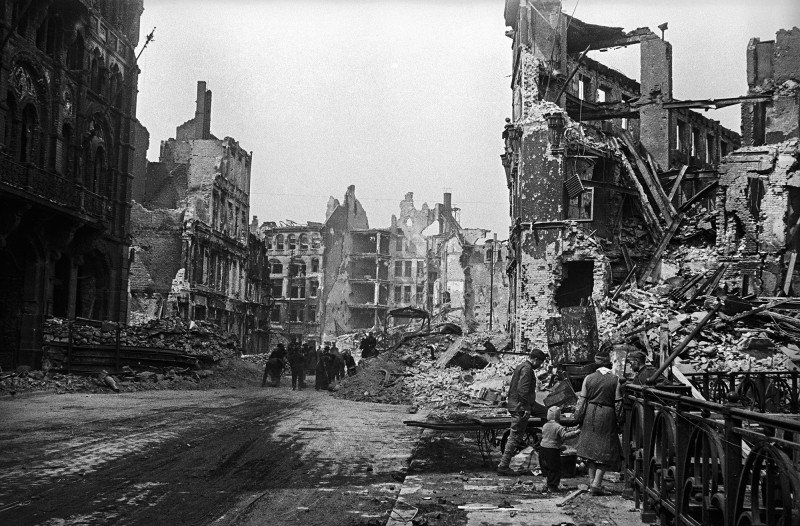
Berlin, May 1945 (view of Spittelmarkt, seen from Wallstraße)
Faminsky (1914-1993) was a front-line reporter for the Red Army from 1943 to 1945. His actual task was to document the medical assistance and transport of wounded soldiers. Backed by this legitimisation, he was able to move around Berlin freely, defying the ban on photographing the civil population, the misery and the destruction. On May 22, 1945, Faminsky returned to Moscow with his rolls of exposed film. There, he sorted out the nearly 500 negatives and contact pictures, and kept them in his apartment, until his death in 1993. They were never published; and it seemed pure chance that the Moscow-based, Ukrainian photojournalist Arthur Bondar discovered the archive, when it was offered online in 2017 by Faminsky’s heirs. Bondar immediately recognised the value of the material and decided to purchase it. He then made it public -- first in Russia and, a short time later, in Germany.
As a photographer for the Red Army, Faminsky initially worked with a Kiev camera and Russian film material. As of February 1945, he started photographing with a Leica, loaded with Agfa film. One of the first motifs he captured was a photography business, Foto Staube, in the Silesian town of Bunzlau (today Boleslawiec). While doing research, the publishers of the photo book concluded that this was probably where Faminsky acquired his Leica. From that moment on, he not only took the official military/medical photographs that are stored in Moscow to this day; he also documented scenes that he never handed over to the department, but instead chose to keep private. With his Leica in hand, Faminsky became more mobile. As of April 16, 1945, he was able to capture, from up close, the happenings on the streets of the city, during the conquest and after the capitulation of Berlin.
The resulting archive of Faminsky’s body of work has many layers, because he was capturing daily life in civil times: we see the evacuation of the wounded, Berlin youths handing out leaflets, parades, posing Russian officials, a Russian painter of ruins, and Berlin citizens standing in line for food. What makes the pictures unique is that they not only present history with great immediacy, but also reveal the photographer's motivation and his personal, humanistic perspective. (Ulrich Rüter)
Valery Faminsky: Berlin May 1945
Publishers: Thomas Gust, Ana Druga, Arthur Bondar, Joseph Dilworth. 184 pages, 114 black and white pictures 26 x 22 cm, German, English Verlag Buchkunst Berlin, 2018 (2nd edition, 2020)
The book can be ordered here.
The work by Faminsky is on display at the Forum für Fotografie in Cologne. The exhibition has been extended to June 20.
Valery Faminsky+-
Valery Faminsky was born in Moscow on May 14, 1914. He trained as a photographer. Because of bad eyesight, he was exempted from joining the army. In 1943, however, he joined the Red Army as a photographer, taking documentary photos for the Red Army’s Military/Medical Museum, and producing pictures from seven fronts. As of April 1945, he was in Berlin; on May 26, 1945 he returned to Moscow, where he died on September 8, 1993. More

Berlin, May 1945 (view of Spittelmarkt, seen from Wallstraße)
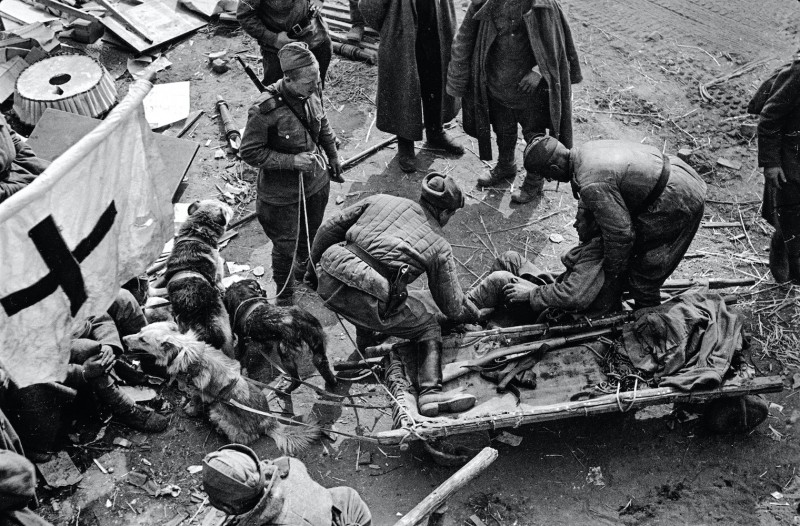
Delivery of a wounded man to the evacuation point, by dogs. Near the Sealow Heights, April 1945
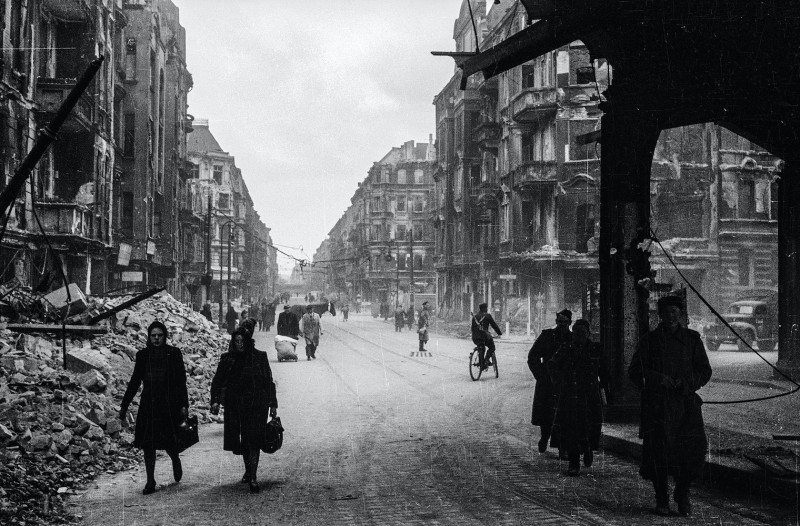
May 1945 (view of the Falckensteinstraße)
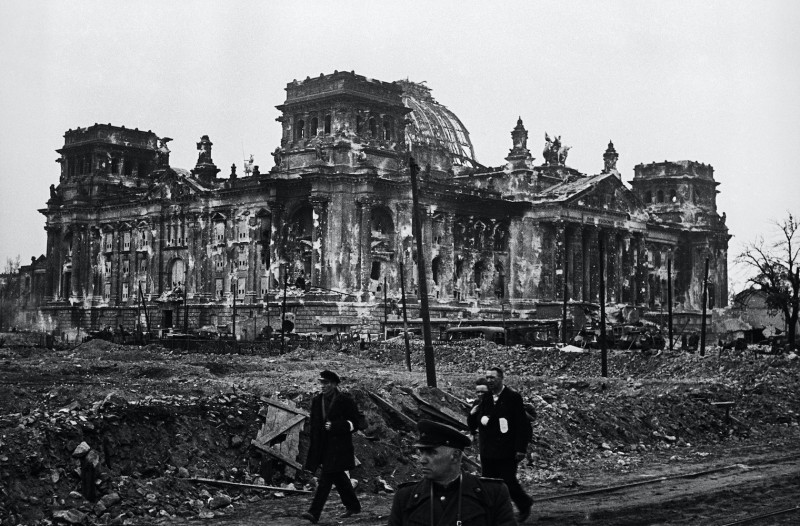
Near the Reichstag, May 1945
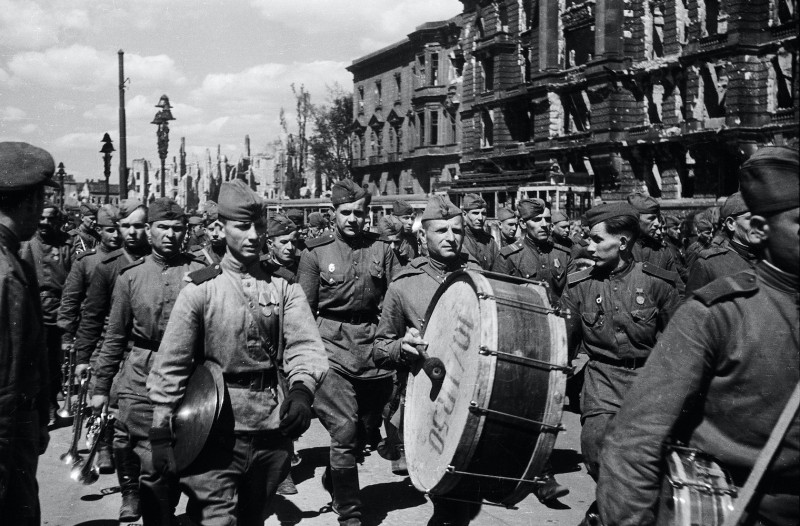
Berlin, 20. Mai 1945
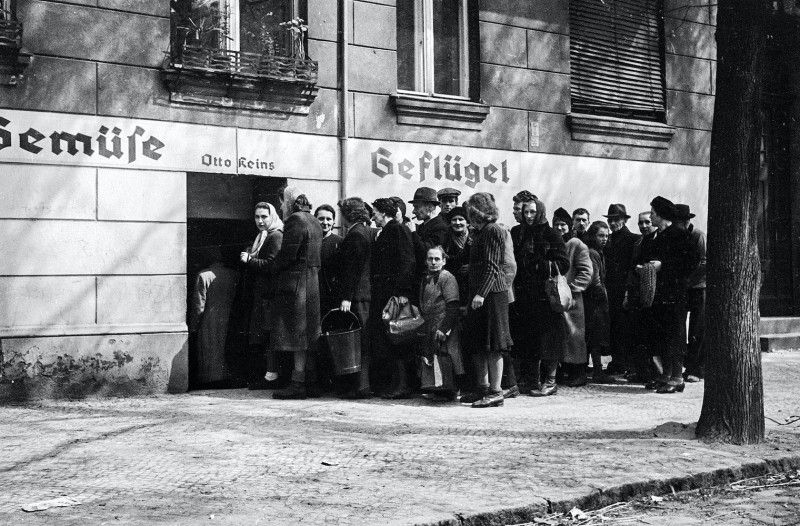
May 1945 (Miquelstraße, today Zachertstraße)

Distribution of leaflets with the text oft he capitulation, Berlin, May 8, 1945
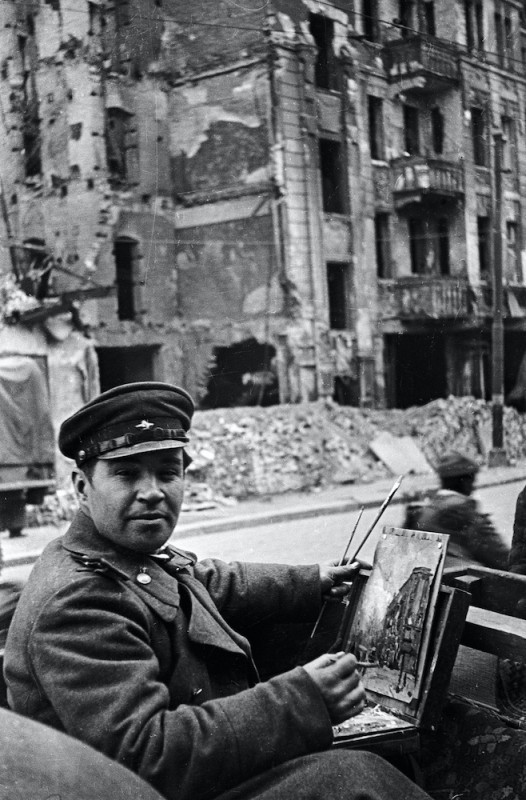
Kitayko, a painter from the Grekov studio, May 1945
